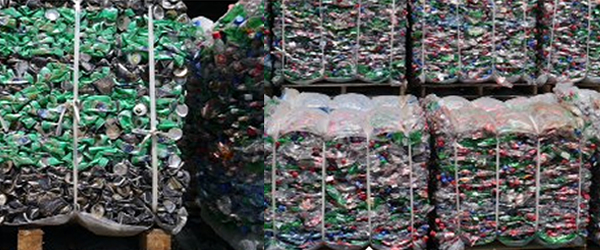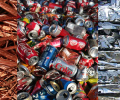Plastic
Caribe Recycling is dedicated to sustainable plastic’s recycling and to minimize plastic waste being sent to landfill and incinerators.If every American household recycled one out of every ten HDPE (high density polyethylene) bottles, this would keep 200 million pounds of plastic out of landfills every year.
Easy Plastics to Recycle
The easiest and most common plastics to recycle are made of polyethylene terephthalate (PETE) and are assigned the number 1. Examples include soda and water bottles, medicine containers, and many other common consumer product containers. Once it has been processed by a recycling facility, PETE can become fiberfill for winter coats, sleeping bags and life jackets. It can also be used to make bean bags, rope, car bumpers, tennis ball felt, combs, cassette tapes, sails for boats, furniture and, of course, other plastic bottles.
Number 2 is reserved for high-density polyethylene plastics. These include heavier containers that hold laundry detergents and bleaches as well as milk, shampoo and motor oil. Plastic labeled with the number 2 is often recycled into toys, piping, plastic lumber and rope. Like plastic designated number 1, it is widely accepted at recycling centers.
Plastics Less Commonly Recycled
Polyvinyl chloride, commonly used in plastic pipes, shower curtains, medical tubing, vinyl dashboards, and even some baby bottle nipples, gets number 3. Like numbers 4 (wrapping films, grocery and sandwich bags, and other containers made of low-density polyethylene) and 5 (polypropylene containers used in Tupperware, among other products), few municipal recycling centers will accept it due to its very low rate of recyclability.
Another Useful Plastic to Recycle
Number 6 goes on polystyrene (Styrofoam) items such as coffee cups, disposable cutlery, meat trays, packing “peanuts” and insulation. It is widely accepted because it can be reprocessed into many items, including cassette tapes and rigid foam insulation.
Hardest Plastics to Recycle
Last, but far from least, are items crafted from various combinations of the aforementioned plastics or from unique plastic formulations not commonly used. Usually imprinted with a number 7 or nothing at all, these plastics are the most difficult to recycle and, as such, are seldom collected or recycled. More ambitious consumers can feel free to return such items to the product manufacturers to avoid contributing to the local waste stream, and instead put the burden on the makers to recycle or dispose of the items properly.




